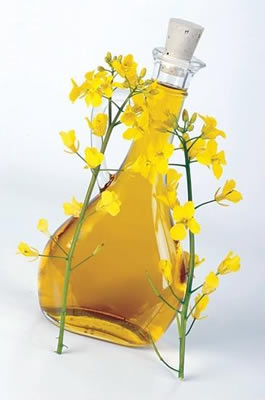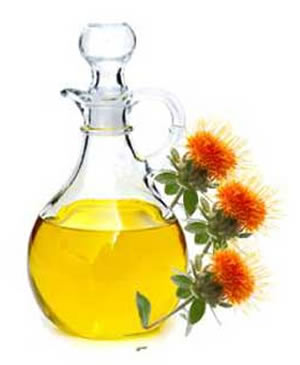Difference between Canola Oil and Safflower Oil
Key difference: Canola and safflower oils are diet conscious cooking oils as both are high in monounsaturated fats. Canola oil is obtained from seeds of rape plant, while Safflower oil is obtained from safflower flower seeds. Apart from their origins, these oils are quite similar to each another and are known for their heart health benefits.
The fat content among these oils are directly effective on the health aspect of an individual. And as the major share of fats comes from oils, they do play a vital role to maintain a good and stable health. Vegetable oils and their diet benefits are famous among all the health conscious people. Oils are in demand for both cooking and other health benefits. They are major ingredients in various recipes, and hence with fact make them favorite among chefs, grannies, mothers and cooks.
 Canola and Safflower oils are not that different from one another; the oils belong to the Mediterranean, northern African and southwestern Asian and Indian regions. Both oils have a mild taste and are high in monounsaturated fats. Due to which, the oils does not interfere with any flavors of the other food items. Along with some similarities, there also lies some difference in their characteristics, like their origins which keeps them different from each other.
Canola and Safflower oils are not that different from one another; the oils belong to the Mediterranean, northern African and southwestern Asian and Indian regions. Both oils have a mild taste and are high in monounsaturated fats. Due to which, the oils does not interfere with any flavors of the other food items. Along with some similarities, there also lies some difference in their characteristics, like their origins which keeps them different from each other.
Canola oil is made from the rape seeds of rape plant; scientifically these are the Brassica campestris (Brassica napus L. and B. campestris L.). The oil is processed with precipitation and organic acid treatments. In cooking, it is used in baking to stir-frying to deep-frying or grilling; the oil especially known for high heating purposes. The oil is used in many situations and methods as a substitute to saturated fats. Like other oils, canola oil is also applicable in applications of industrial lubricants, bio-fuels, candles, lipsticks, and newspaper inks depending on the price on the spot market. The American Society for Reproductive Medicine recommended that the canola oil is regarded to be the fertility-preserving vaginal lubricant. Recently, the studies have also been conducted to utilize the oil for reducing the growth of cancer cells.
 Safflower oil is obtained from safflower seeds, belonging to the sunflower family. The oil is also among the common cooking oils used for average heat cooking and applications. The best applications of safflower oil are found in dermatology, wherein the oil is used in skin and its related issues and problems. There are two types of safflower that produce different kinds of oil: one high in monounsaturated fatty acid (oleic acid) and the other high in polyunsaturated fatty acid (linoleic acid). The corresponding oils are applicable in paints, particularly in white paints. The high linoleic safflower oil is applicable in the dietary purposes; also it helps to regulate the blood glucose levels and fatty-acid breakdown. According to a study, safflower oil contains a protein called adiponectin, which have proves to be beneficial among the menopausal women and their issues. The oil proves to be beneficial for preventing heart disease, also including the hardening of the arteries mainly in the atherosclerosis and stroke.
Safflower oil is obtained from safflower seeds, belonging to the sunflower family. The oil is also among the common cooking oils used for average heat cooking and applications. The best applications of safflower oil are found in dermatology, wherein the oil is used in skin and its related issues and problems. There are two types of safflower that produce different kinds of oil: one high in monounsaturated fatty acid (oleic acid) and the other high in polyunsaturated fatty acid (linoleic acid). The corresponding oils are applicable in paints, particularly in white paints. The high linoleic safflower oil is applicable in the dietary purposes; also it helps to regulate the blood glucose levels and fatty-acid breakdown. According to a study, safflower oil contains a protein called adiponectin, which have proves to be beneficial among the menopausal women and their issues. The oil proves to be beneficial for preventing heart disease, also including the hardening of the arteries mainly in the atherosclerosis and stroke.
Canola and safflower oils have their own pros and cons. The oils provide the essential fatty acids like omega-6, also known as linoleic acid, and omega-3, or alpha-linolenic acid which boost the immune system and enrich the vascular health. Safflower oil has a high smoke point, at 265 degrees Celsius, while canola oil's smoke point is 238 degrees Celsius. As per the American Diabetes Association, canola oil is rich in monounsaturated fats, which lowers the bad cholesterol levels and also reduce the risk of heart attack or stroke. While safflower oil, has vital sources of heart-healthy omega-3 fatty acids as well as cancer-fighting antioxidants.
Comparison between Canola Oil and Safflower Oil:
|
|
Canola Oil |
Safflower Oil |
|
Oils obtained from |
rapeseed which is a pure seed |
safflower seeds |
|
In cooking, |
saute, shallow fry, deep fry |
cooking oil, in salad dressing, and for the production of margarine |
|
Also used in |
cooking, as bio-diesel, , candles, lipsticks, and newspaper inks |
color cosmetics and dye fabrics |
|
Adiponectin |
absent |
present |
|
Smoke Point |
238 degrees Celsius |
265 degrees Celsius |
|
Health Benefits |
|
Reduces Issues like:
|
Image Courtesy: halalscience.org, naturesgardencandles.com









Add new comment